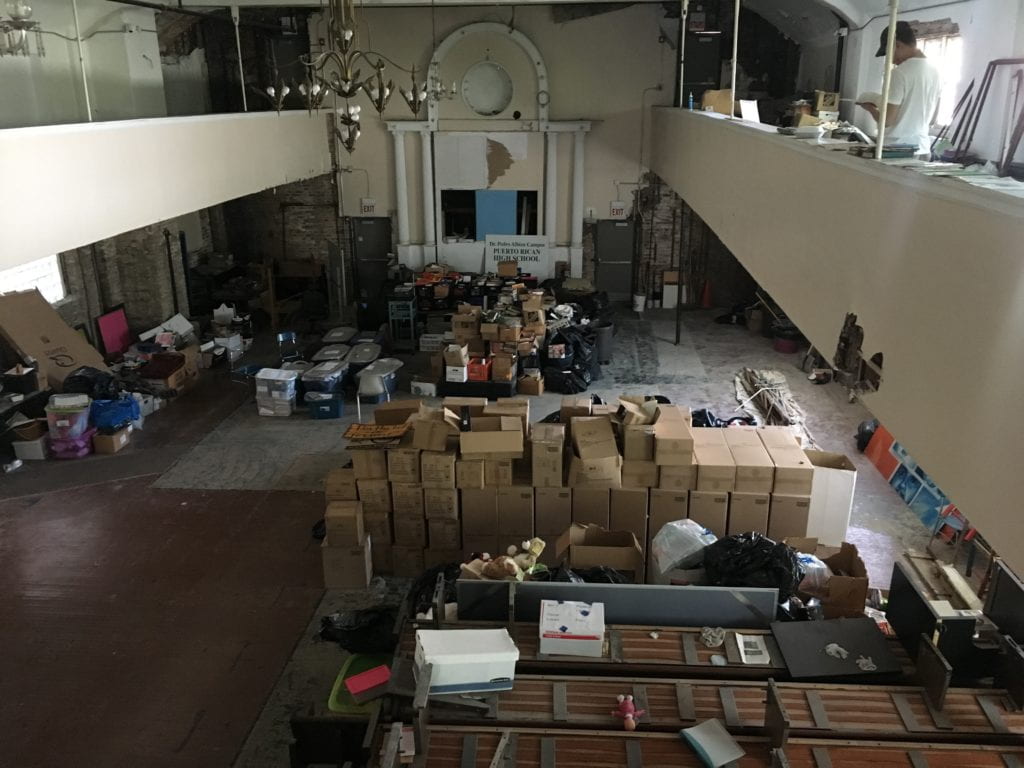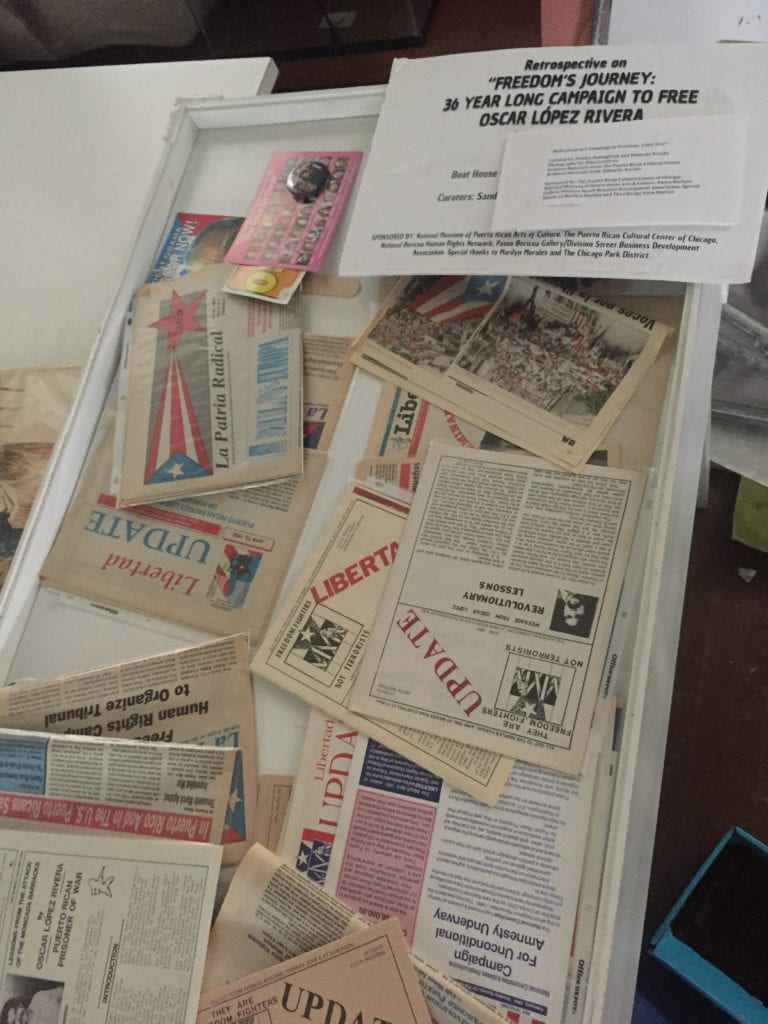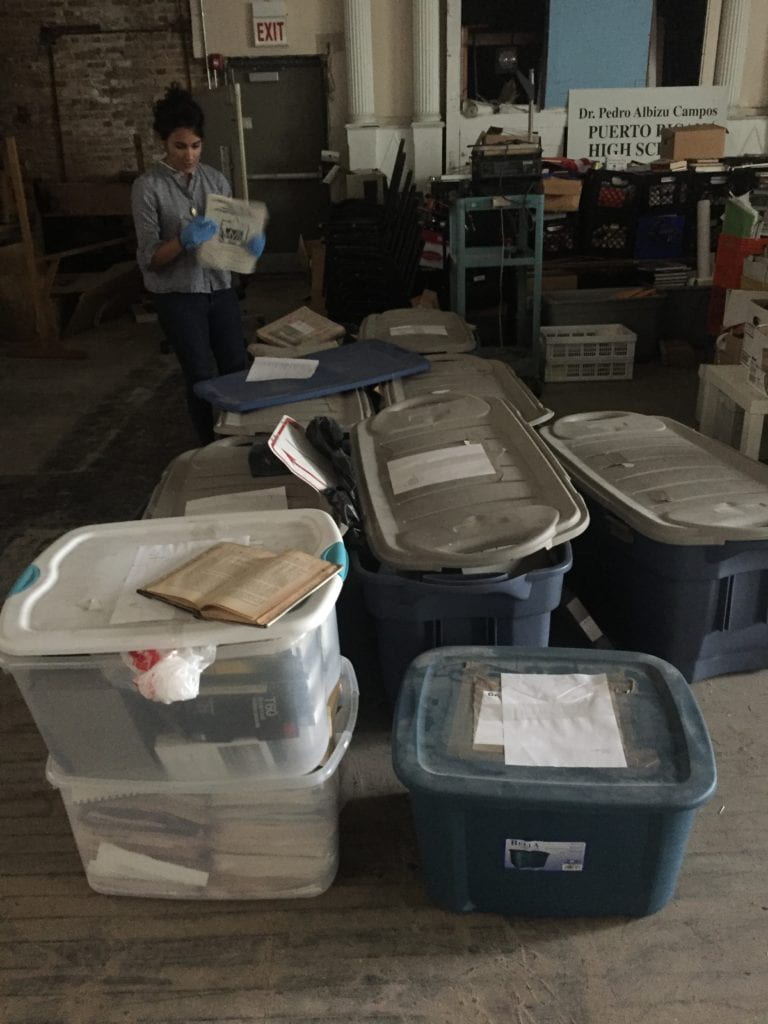I want to take this post to dive further into the actual project that I am working on here in Chicago with the Puerto Rican Cultural Center. Unlike most other GGFUP fellows who had more open-ended plans within their local organizations, I have known some of the structure and goals of my “research” from the start. The PRCC has had an archival project as part of its plans for a long time, so starting to understand the history of this initiative, in addition to the history of the organization, has been important for me.

Large two-story space full of many archival materials that our team has now surveyed. Other organizations, who are related to the PRCC, also have materials stored here.
At various points over the past 15 years, different projects have been spearheaded to collect and catalog the PRCC’s historic materials, including (but not limited to) various community leaders uploading and making publicly accessible the photographs and recordings from local events, partnerships with university classes to digitize and tag documents, and the collection and organization of community newspapers and related publications. Furthermore, as numerous initiatives of the PRCC (and partnerships it has formed) have produced various records in a range of local properties, materials are now moved around and spread out.
This said, a large part of my first few weeks here has been trying to compile as much information as possible about the migration of the PRCC’s documents. From an archival perspective, it is key to make sure that we know as much information as possible about where records exist now and how they got there. Even if we don’t have a full picture at this point, documenting this data is essential to understanding the history of the materials, and therefore of the organization itself. This is one of the foundational tenets of archiving practice, as it is the archivists’ job to provide for future researchers, as best as possible, the context of the records and their creation. In this case, that context includes their movement.

The aftermath of a public exhibition compiled by community leaders from historic newspapers and other documents, entitled “Retrospective on Freedom’s Journey: 36 Year Long Campaign to Free Oscar Lopez Rivera.”
Our team includes many people with various ties to the local Puerto Rican community in Humboldt Park, to the PRCC itself, and to the history of its activist work and its archiving initiatives. We have now spent time between multiple buildings and basement spaces, conducting a preliminary survey to gain a sense of the materials that we are working with, as well as their current physical conditions. Everyone knew that there were MANY materials, but the scope and scale of the project thus far has been somewhat of a surprise to me. Thankfully, we have a lot of compiled knowledge and expertise about the documents, as well as a lot of enthusiasm to be organizing and making accessible this history to a wider audience.
There is a sense of urgency to this initiative, as people involved over many years have expressed that historic materials (and knowledge) were already lost to time, movement, and environmental disasters. Formalizing an archive and a history program will help the PRCC document oral histories from community members, as well as can create a hub of community-focused archival collection and participation. There is a rich history of political and community relationships and initiatives, which has significant value but is often forgotten or minimalized in larger historic conversations. For Puerto Ricans in Humboldt Park, making this historic material more accessible and having a self-directed voice in preserving and telling their own stories, which will in turn help to make this community more visible in multiple ways, is an essential part of grounding its future.

One team member inspecting documents within many large bins of materials. Everything will be organized and rehoused in a more stable location, with as much information about the trajectory of these materials as possible.

Great! I wonder whether anyone at the PRCC has brought up the idea of getting a grant (IMLS, for example?) to continue this project in a formal way that is not only volunteer-based? Did we talk about that already? It’s deeply exciting to me that PRCC is so interested in creating this archive as a resource for future organizing, but also for community-building — that is, the instantiation of a true archive of the organization further roots it as a major institution in Chicago and the Puerto Rican diaspora. Not only will it be easier for historians and other researchers to trace the activities of the organization and of Puerto Rican history in Chicago, it is also a kind of “nation-building” exercise akin to the cultural infrastructures Benedict Anderson refers to in his book IMAGINED COMMUNITIES. True that most people involved in the PRCC are geographically close to it, as opposed to scattered about, but there’s something about this project that is also about creating a physical space for the diaspora, a placelessness, that is separate from Puerto Rico itself.